Volkswagen Commercial Vehicles has been making a big push on its van conversion offerings throughout 2017, culminating in November’s VW Converter Expo – a small but still impressive gathering of third-party vehicle converters at the firm’s National Learning Centre in Milton Keynes.
With many of the converters also bringing demonstrators along, we popped in to take a look at exactly what VW is able to offer beyond the regular panel vans in the brochures.
What is a van conversion?
In its simplest terms, it’s any van that’s been converted with a specific purpose in mind – perhaps the most familiar examples being camper vans, motorhomes and minibuses.
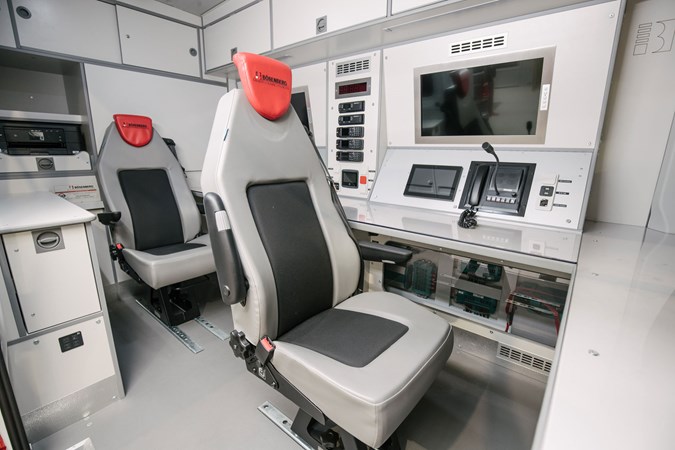
But there are lots of different types of working conversion as well, with VW’s current line-up ranging from ambulances, refrigerated vans and tippers to breakdown recovery trucks and wheelchair accessible vehicles.
Most VW conversions are carried out on the company’s van range – the Caddy, Transporter and Crafter. It is possible to arrange for conversion work on an Amarok pickup, but not many people do at this stage.
Most VW conversions sold in the UK are made by third-parties, particularly VW’s specially selected Recognised Converters. However, there are factory conversions available on some vehicles, too.
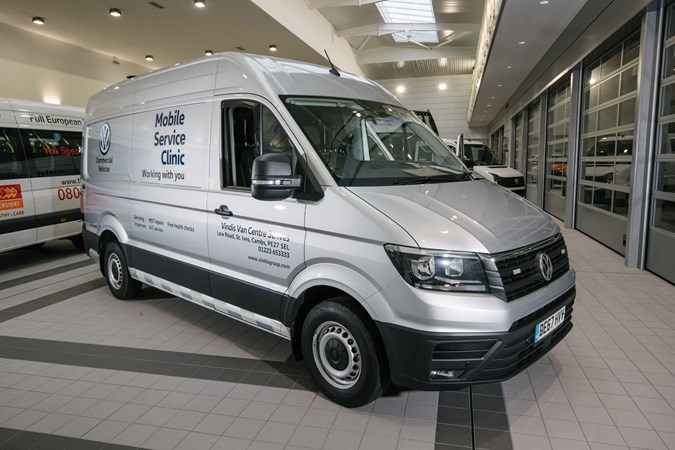
The latest Crafter is particularly interesting from a conversion perspective, as every example in the UK comes fitted with something called a customer-specific functional control unit (CFCU) as standard.
This gives converters the ability to control a number of vehicle functions – such as the stop-start system, to prevent the engine switching off when a refrigeration unit is running – and also better incorporate add-on devices.
Having it fitted as standard means any Crafter sold in the UK is suitable for conversion use, whether new or used.
For more information on van conversions in general see:
How do you order a VW van conversion?
Part of VW’s push on conversions in 2017 revolves around making it much easier for customers to order them at Volkswagen Commercial Vehicle dealerships.
As well as giving additional training to its sales and aftersales teams to achieve this, VW has also built an iPad app that guides both customers and dealer staff through the conversion ordering process – helping them to pin-point not only what kind of vehicles are available to best suit customer needs, but also the right standard equipment to support the conversion.
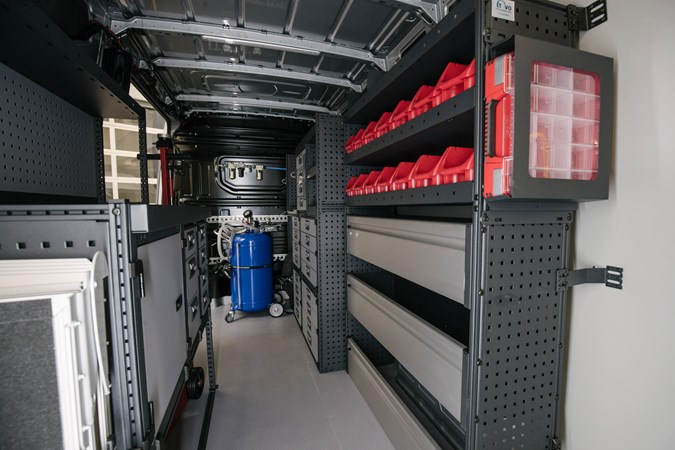
This ranges from mandatory items that are absolutely necessary, through to recommended items and then finally regularly order items – hopefully resulting in a final vehicle build that properly suits the customer’s needs.
Many conversions can be ordered direct from the dealership as a result, matching the standard VW three-year warranty as part of the process.
Like most van manufacturers, VW has a large number of recognised van converters on its books. This Converter Recognition Programme has three tiers:
- Registered Bodybuilder
- Integrated Partner
- Premium Partner
To achieve Integrated or Premium Partner status, the third party converter has to undergo regular quality audits and deliver proper type approval certification, as well as the same level of aftersales support as a regular VW van.
Vehicles at the 2017 VW Converter Expo
Advanced KFS car transporter
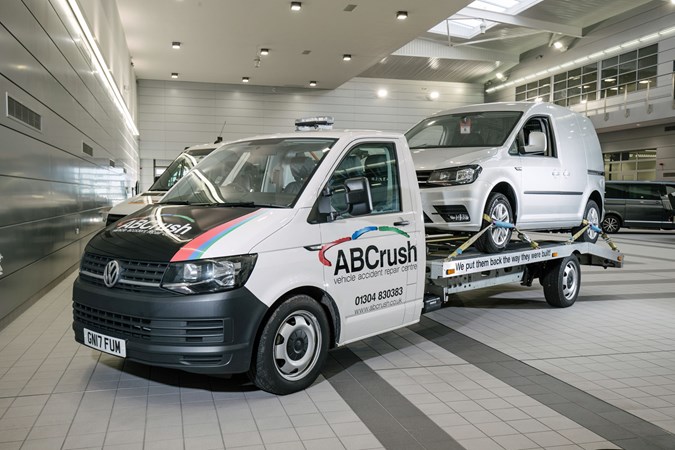
Based on a VW Transporter, this features an extended rear chassis to provide a suitable area for car transport, including breakdown recovery when additional winching equipment is fitted.
This starts life as an unusual Transporter Zugkopf, which is two cabs joined together back-to-back. These are then split apart and transformed into two complete new vehicles using an entirely new rear chassis arrangement made by AL-KO.
The car transporter bed is then added by Advanced KFS, which can arrange the whole conversion process so the customer simply orders and has delivered a finished vehicle with full type approval.
AMZ Emergency Services Ambulance

Based on the latest Crafter, this new conversion is currently doing the rounds of UK emergency services as a proof of concept for a modern ambulance solution.
It’s been built by AMZ in Poland, which specialises in these kinds of conversions.
Bri-Store RAC van
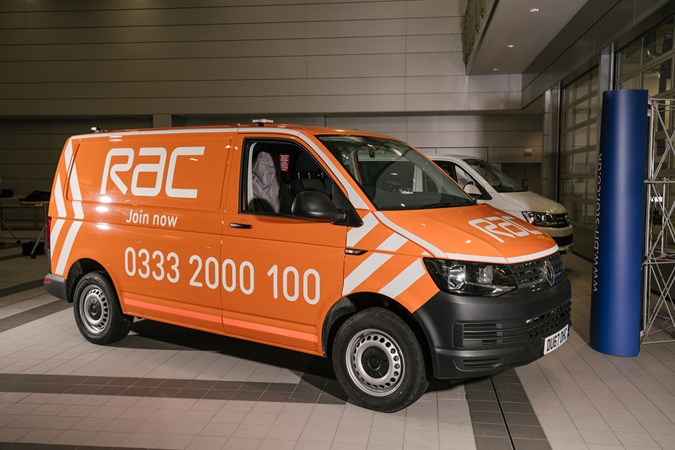
Bri-Store is best known as a racking manufacturer, but it also does around 8,000 bespoke vehicle conversions every year – ranging from large fleets to individual models.
This example is – obviously – an RAC patrol van. Bri-Store builds these and the RAC’s mis-fuel vans entirely on-site, using the VW Transporter as a base, and manufacturing all but the most specialist components in-house.
Cold Consortium refrigerated Caddy
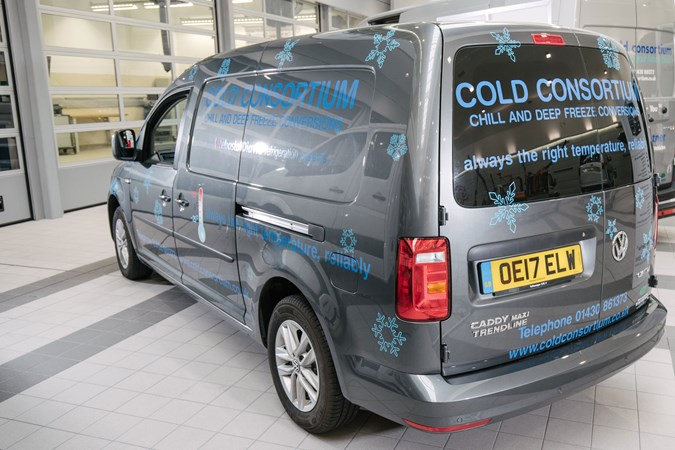
This Caddy fridge uses a hybrid air-conditioning system that retains the air-con system for the cab while delivering a refrigeration system for the back of the vehicle.
This particular example was built for a customer to haul fish, so has a moulded drainage system to prevent corrosion to the vehicle’s metal bodywork.
Cold Consortium refrigerated Crafter
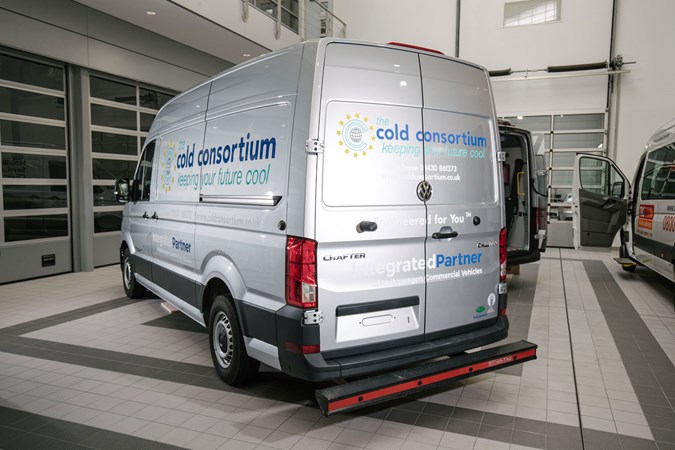
Based on the latest Crafter, this ‘full deep freeze’ model has a temperature range capability from minus 25 degrees C to plus 25 degrees C.
Features include a full load retention system and a double-lock side door – meaning it can be optionally part rather than fully opened in order to reduce temperature loss during deliveries.
Coolkit refrigerated Crafter

Another new Crafter fridge, this one featuring a slab door in place of the conventional sliding door – a modification that Coolkit says saves weight (8kg) and improves insulation. The standard steel bulkhead is also removed to save weight (28kg) in this vehicle.
The replacement bulkhead has been fully crash tested, and the result is a refrigerated Crafter with a 1,010kg payload capacity. It’s also certified to carry refrigerated goods across European borders, which isn’t always a given.
Fire command centre Crafter
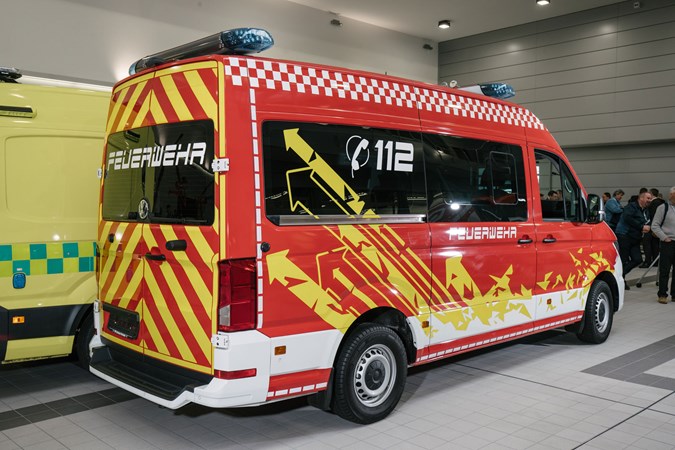
This is a factory-built demonstrator, with full command and control facilities on-board for tackling major fires. Fun, but extremely specialised.
GM Coachworks wheelchair accessible Caravelle
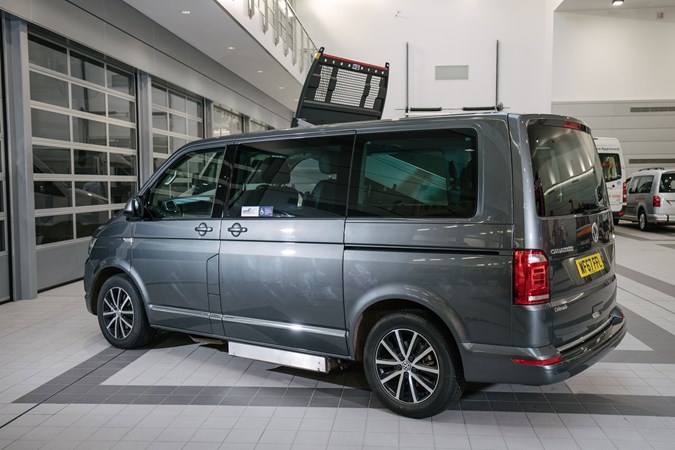
Not necessarily a conversion you would order via a VW dealer, but impressive, none-the-less. Based on the VW Caravelle – the MPV version of the Transporter – this example features wheelchair side-access via a ramp that tucks under the vehicle and a lowered internal floor to seat wheelchair users at the same height as regular passengers.
It also has full hand controls to allow for a wheelchair driver, with the single seat up front easily switched from the passenger to the driver’s side, as required.
Ingimex Transporter Pick-Up
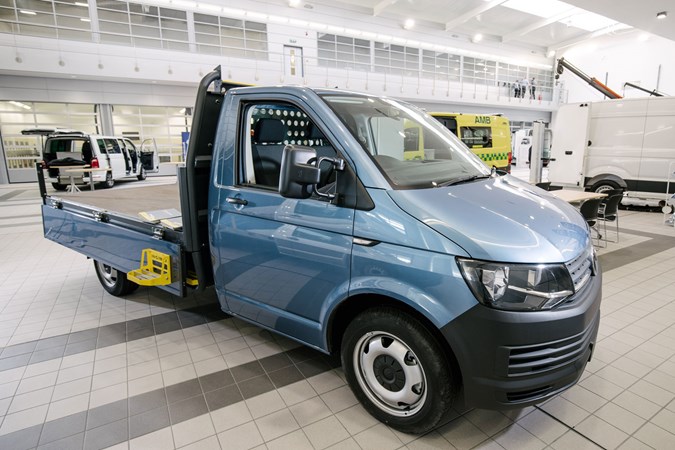
We covered this and its Tip-Up brother (see below) when they were announced earlier in 2017, but this is our first chance to see the Ingimex Transporter conversions in person. Uniquely based on a mid-size van, compact dimensions and up to 1,200kg of payload makes this a good solution for urban use.
Ingimex makes everything on-site in Telford, and we have to say the quality of the fit and finish looks outstanding. No wonder VW’s UK conversion team looked so pleased with them.
Ingimex Transporter Tip-Up

Naturally very similar to the Ingimex Transporter Pick-Up (see above), but the Tip-Up features a rear tipper bed in place of the Pick-Up’s fixed dropside design. Both T30 and T32 versions are available.
Similar Ingimex conversions are planned for the latest Crafter in 2018.
Lewis Reed wheelchair accessible Caravelle
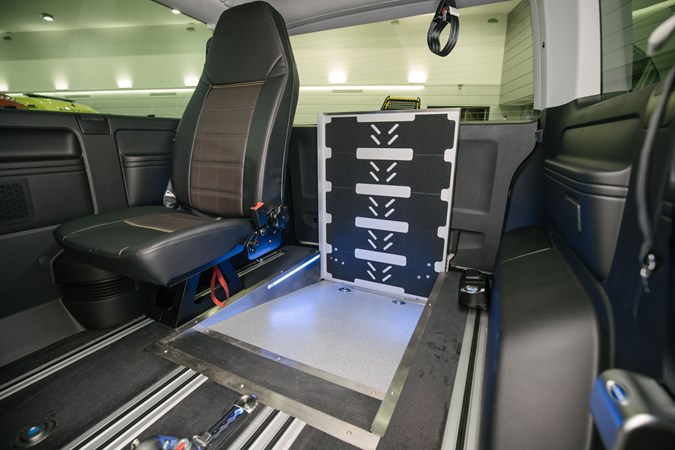
Another high-end Caravelle wheelchair conversion, which can also allow for a wheelchair driver. This Lewis Reed version has rear rather than side access, combined with air suspension that lowers the back of the vehicle to make getting the wheelchair on board easier.
Another feature of this design is the allow the wheelchair user to sit in the middle row of the cabin as well as the front. Many alternative designs consign them to the very back of the van.
Penny Hydraulics
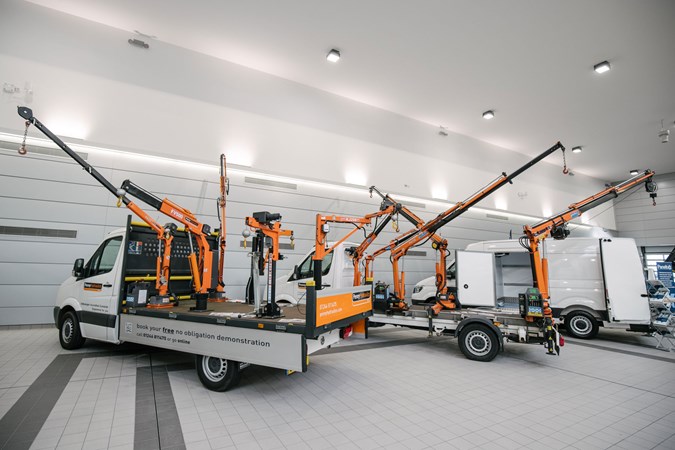
Penny Hydraulics specialise in van-mounted lifting equipment – though not usually as many as you see here are fitted to a single customer vehicle.
‘Ultra-lightweight’ SwingLift electric cranes are a particular favourite, maximising payload alongside functionality.
Taxi Bus Conversions (TBC) wheelchair accessible Caddy
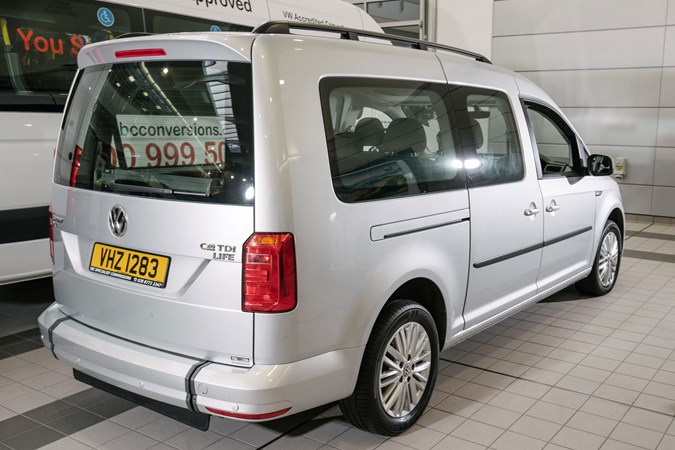
Another wheelchair accessible vehicle (WAV), this time based on the smaller Caddy. TBC has aimed to designed the rear ramp so that the wheelchair users sits at a similar angle to regular seats, which it says helps to promote long-distance comfort. The unbroken rear door seal improves refinement, too.
A slightly less high-end solution to the others here, TBC also holds considerable stock of both new and used WAVs, making getting hold of one a quicker process than built-to-order (which it also offers).
TBC’s other specialism is minibuses, including wheelchair accessible versions based on the Crafter.
Winton VW Mobile Service Clinic

VW’s own Crafter-based Mobile Service Clinic vans (click here for more info) are built by Winton, which particularly specialises in ‘on-vehicle power’ systems. These are adaptions that use the van’s engine to drive other equipment – in this case a full workshop facility for mobile servicing and repair.
The Mobile Service Clinics are proving popular with both customers and dealerships, as it offers a cost-effective solution to out-of-hours servicing provision for van customers, minimising downtime and aiding efficiency.
VW launches new Mobile Service Clinics for van fleet customers
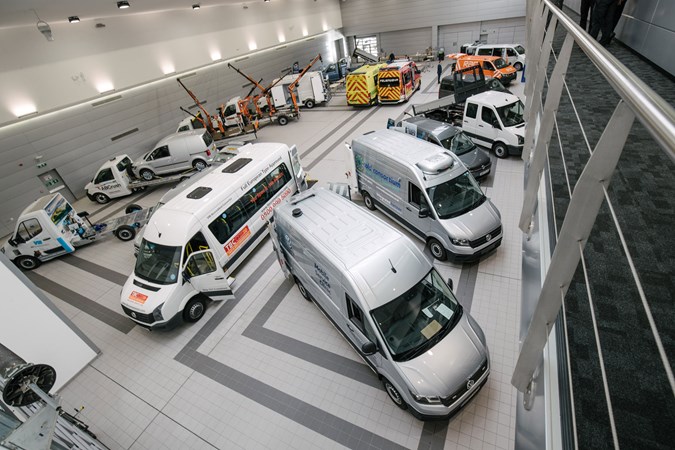
Just so you know, we may receive a commission or other compensation from the links on this website - read why you should trust us.

